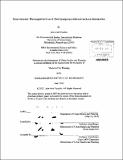| dc.contributor.advisor | Alan Berger. | en_US |
| dc.contributor.author | Vecchio, Ann-Ariel (Ann-Ariel Nichiko) | en_US |
| dc.contributor.other | Massachusetts Institute of Technology. Dept. of Urban Studies and Planning. | en_US |
| dc.date.accessioned | 2012-10-10T16:47:19Z | |
| dc.date.available | 2012-10-10T16:47:19Z | |
| dc.date.copyright | 2012 | en_US |
| dc.date.issued | 2012 | en_US |
| dc.identifier.uri | http://hdl.handle.net/1721.1/73850 | |
| dc.description | Thesis (M.C.P.)--Massachusetts Institute of Technology, Dept. of Urban Studies and Planning, 2012. | en_US |
| dc.description | Cataloged from PDF version of thesis. | en_US |
| dc.description | Includes bibliographical references (p. 115-132). | en_US |
| dc.description.abstract | In urban planning and design, natural systems are a key element of explorations about how to design for sustainability. As part of these efforts, academics and practitioners have also begun to explore the ways in which the utilization of natural systems can and should change our approach to the design and function of urban areas and of infrastructure itself. As an entry point to explore the topic, this thesis focuses on stormwater management as one basic building block or fundamental component of multipurpose infrastructure development. An increasing number of cities will seek to implement green infrastructure approaches or stormwater best management practices (BMPs) in response to new regulation, desires to improve urban quality of life, and changes in attitudes about sustainability and climate change. However, a variety of urban conditions exist within and between cities, and it is therefore necessary to consider the range of possibilities for designing and implementing green infrastructure strategies in a range of built environments. At the same time, there is also the need to address other environmental, social, and cultural goals, such as creating assets from vacant land, improving the public realm, and creating connectivity through neighborhoods. This creates opportunities to develop multipurpose infrastructure projects that utilize natural systems to address multiple objectives. San Francisco, California; Lincoln, Nebraska; and Cleveland, Ohio represent three different types of urban conditions and serve as test locations to identify the factors that affect the development of multipurpose infrastructure. San Francisco has a dense urban environment, Lincoln expects continued horizontal growth through subdivisions, and Cleveland's decline in population has created a condition of vacancy throughout the city. These conditions present a range of constraints and opportunities and shape the planning, design, and implementation of multipurpose infrastructure based on stormwater management. As a result, they lead to three methods or approaches for planning and design of multipurpose infrastructure: the retrofitting city, the preemptive city, and the repurposing city. These three approaches highlight how stormwater management can serve as a basis to develop multipurpose infrastructure systems that function at a range of scales, serve multiples purposes and create additional value for communities. | en_US |
| dc.description.statementofresponsibility | by Ann-Ariel Vecchio. | en_US |
| dc.format.extent | 132 p. | en_US |
| dc.language.iso | eng | en_US |
| dc.publisher | Massachusetts Institute of Technology | en_US |
| dc.rights | M.I.T. theses are protected by
copyright. They may be viewed from this source for any purpose, but
reproduction or distribution in any format is prohibited without written
permission. See provided URL for inquiries about permission. | en_US |
| dc.rights.uri | http://dspace.mit.edu/handle/1721.1/7582 | en_US |
| dc.subject | Urban Studies and Planning. | en_US |
| dc.title | Stormwater management and multipurpose infrastructure networks | en_US |
| dc.type | Thesis | en_US |
| dc.description.degree | M.C.P. | en_US |
| dc.contributor.department | Massachusetts Institute of Technology. Department of Urban Studies and Planning | |
| dc.identifier.oclc | 811559168 | en_US |
